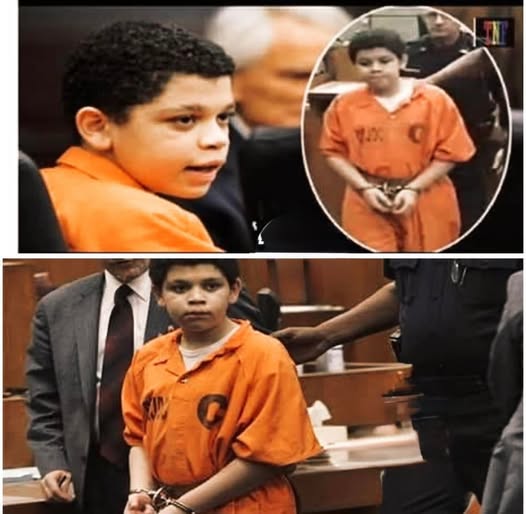In the United States, a troubling and deeply controversial reality continues to exist — at least seventy-nine minors under the age of fourteen are currently serving life sentences without the possibility of parole. This means that children — some barely in middle school — are condemned to spend the rest of their natural lives behind bars, with no hope of ever walking free again. It is a punishment so severe that it has drawn widespread outrage, not only within the nation but also across the international human rights community.
Organizations such as Human Rights Watch, The Equal Justice Initiative, and Amnesty International have long condemned these sentences, calling them a violation of fundamental human rights and basic principles of justice. They argue that these punishments disregard the very essence of what it means to be a child — a person still learning, still developing, still capable of growth and redemption. Many of these children, advocates emphasize, did not grow up in stable homes or safe neighborhoods. Instead, their lives were often defined by poverty, abuse, neglect, broken families, and systemic inequality. Before they ever entered a courtroom, society had already failed them in countless ways.
One of the most well-known and tragic examples of this issue is the case of Lionel Tate. At just twelve years old, Lionel became the youngest person in modern U.S. history to be sentenced to life imprisonment without parole. His case stemmed from the death of a six-year-old girl, a family friend, during what he claimed was innocent play. The court, however, tried him as an adult — and in 2001, he was handed a life sentence. The decision provoked massive public debate, as millions questioned how a child, barely a preteen, could be held to the same legal and moral standards as a grown man. Though Lionel’s sentence was eventually reduced after years of appeals, his story became a symbol of what many consider the deep moral failing of the American justice system when it comes to children.
Experts in psychology, law, and ethics have repeatedly pointed out that children are not miniature adults. Neurological studies have shown that the parts of the brain responsible for impulse control, judgment, and foresight — particularly the prefrontal cortex — do not fully develop until a person’s mid-twenties. This means that minors, especially those under fourteen, lack the same capacity as adults to make reasoned, long-term decisions or to fully comprehend the consequences of their actions. Therefore, to hold them accountable with the same level of punishment — life imprisonment with no chance of release — undermines both science and morality.
The U.S. Supreme Court has taken steps to address this injustice. In 2012, the Court ruled in Miller v. Alabama that mandatory life sentences without parole for juveniles are unconstitutional, declaring that such punishment fails to consider the potential for rehabilitation. Then, in 2016, another landmark ruling — Montgomery v. Louisiana — made that decision retroactive, granting thousands of juvenile offenders the opportunity to have their cases reviewed. However, despite these rulings, the reality on the ground remains uneven. Many states have been slow, reluctant, or outright resistant to revisiting old cases, leaving hundreds of prisoners who were sentenced as children still languishing behind bars with little hope for review.
In certain states, the justice system continues to impose extraordinarily harsh penalties on minors, arguing that some crimes are so severe that age should not lessen the punishment. But child advocates and reformers counter that this approach ignores one of the most essential truths about youth — the capacity to change. They believe that children, even those who have committed terrible acts, deserve an opportunity to reform, to heal, and to eventually rejoin society as contributing members.
Instead of focusing on retribution, advocates push for alternatives rooted in rehabilitation and restorative justice — approaches that emphasize accountability, personal growth, and reconciliation rather than permanent exclusion. Programs based on restorative justice bring victims, families, and offenders together to confront the harm caused, foster understanding, and encourage transformation. Research has shown that such methods not only reduce repeat offenses but also help rebuild communities fractured by crime and trauma.
Beyond the legal and ethical debates, this issue has forced America to confront a deeper question: What does justice truly mean when it comes to children? Is justice the act of punishing them as though they were fully formed adults, or is it the willingness to guide them toward redemption and reform? The answer to that question shapes not only the fate of those seventy-nine minors but also the moral direction of the nation itself.
Across the country, families of incarcerated youth continue to fight for change. They write letters, attend hearings, and work with advocacy groups to bring public attention to what they call “the invisible children of America’s prisons.” Many of these families hold onto hope — fragile but unbroken — that one day, the laws will reflect compassion rather than vengeance, and that every child, no matter the mistake, will be seen as capable of transformation.
Ultimately, this struggle is not only about sentencing laws or court decisions. It is about human dignity — about recognizing that children, even those who have made grave errors, are still growing, still learning, and still capable of light. And as long as even one child remains condemned to die in prison, the question will linger: can a society that calls itself just truly turn its back on its own children?
